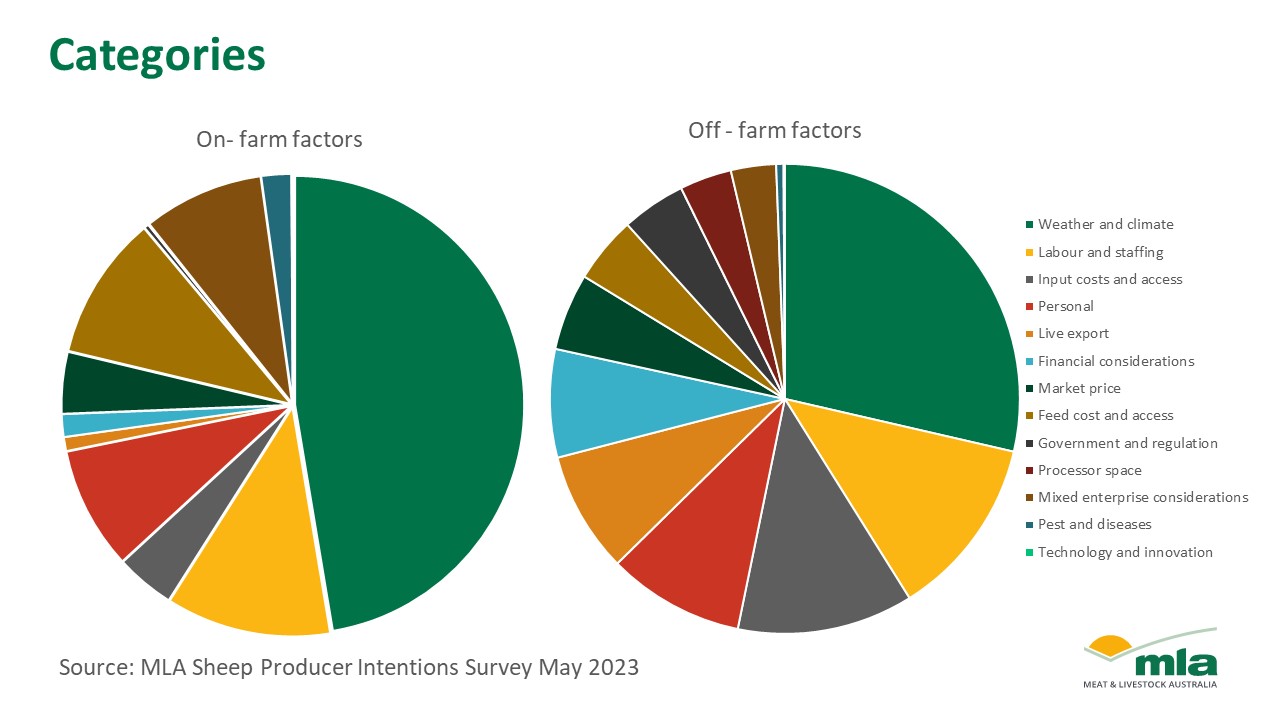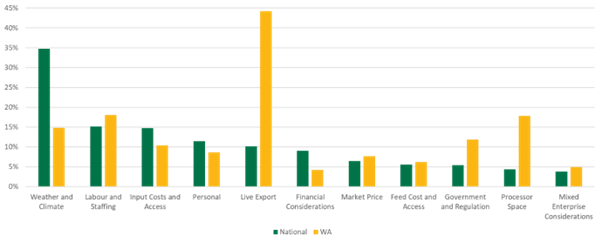What drives sheep producers’ on-farm behaviours?
Key points
- Weather is the largest driver of decision making for sheep producers.
- Different sized properties have different concerns. Larger flock sizes focus on financial considerations, whereas smaller producers have a greater interest in personal succession matters.
- WA producers are more concerned with labour, processor capacity and live exports than the national average.
Meat & Livestock Australia (MLA) and Australian Wool Innovation’s (AWI) Sheep Producer Intentions Survey (SPIS) is used to help industry determine wool and lamb production forecasts and to understand the breed composition of the Australian flock on a national, state and regional basis. The May 2023 wave of the SPIS is the first deep dive into producer commentary on decision-making, so it is difficult to compare to previous waves. However, insights between flock size and state location produce interesting outcomes.
Results have produced both expected and unexpected insights into the factors influencing on-farm decision making over the upcoming six-month period – out to the end of the 2023 calendar year. The survey specifically looks at non-price-related drivers of farm decision making.

Weather is the number one concern
Producers across the board indicate weather and climate as their number one factor in decision making. This high degree of concern matches the Bureau of Meteorology (BOM) reporting that Australia has now moved into an El Niño and positive Indian Ocean Dipole (IOD) phase. Nearly 50% (47.4%) of a producer’s on-farm decision making is dictated by weather or feed considerations.
Different sized properties have different concerns
As flock size increases, we see growing interest in consideration of input costs and access to inputs, financial factors including interest rates, the broader economy, and lease and land prices. While producers with a larger flock size are more concerned with financial considerations, 18% of small sheep producers are focused on personal circumstances such as age, retirement and succession planning. With the average age of a sheep farmer in Australia sitting at 63 years old (ABARESAARS), producers may start moving away from their often family-owned and managed farms and begin to consider the succession of their business.
Larger properties tend to be more financially focused in their decision-making. They are also five times more concerned about labour compared to smaller producers. Similarly, small producers focus less on processor capacity compared to bigger properties. Large properties tended to be far more geared towards mixed farming considerations.
Pests and technology adoption were not front-of-mind issues for sheep producers.
Western Australia
Western Australia, the only state where weather was not the largest concern for producers, were most concerned with live export. Additionally, Western Australian producers prioritise processor and abattoir space above other states. Survey data was collected in May, preceding the scheduled three-and-a-half-month live export northern summer moratorium. Commentary from respondents highlighted that producers are limited by the capacities of processors, which has resulted in increased pressure to find an appropriate market for their stock. With processors at capacity, the window for destocking in the preferred market narrows.

Your opportunity to contribute
Information from the Sheep Producer Intentions Survey provides essential data for MLA to distribute to the broader industry. The next iteration of the survey will be released Monday 2 October. You can find the survey here.



